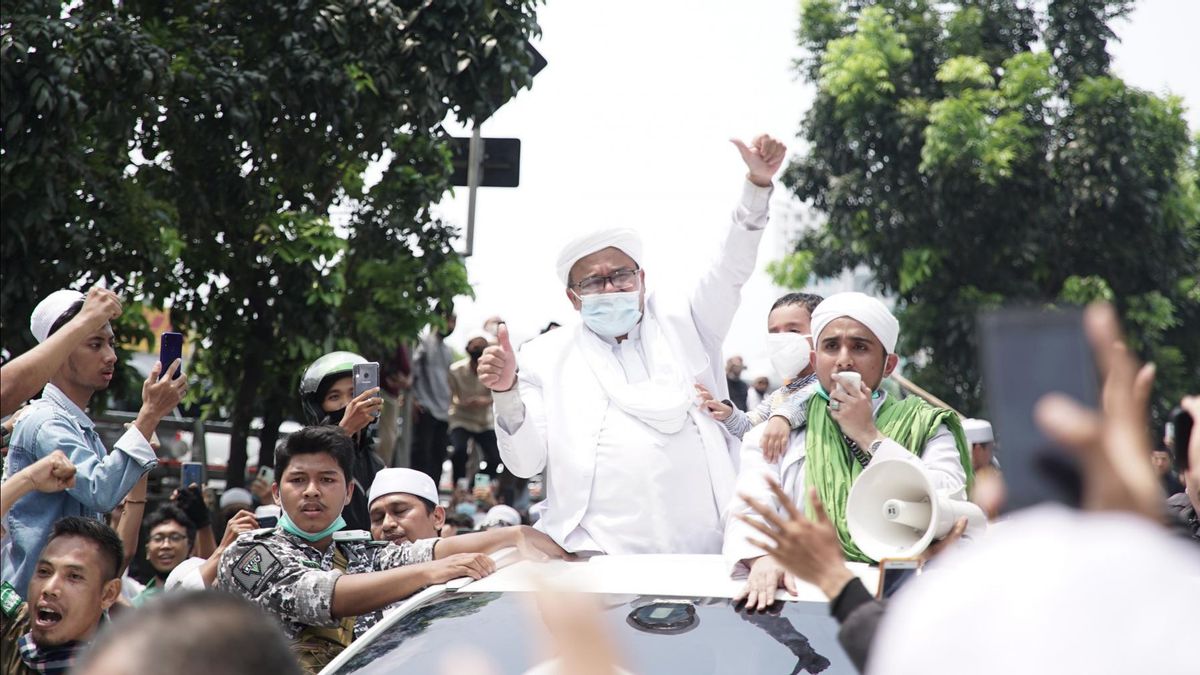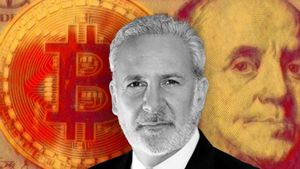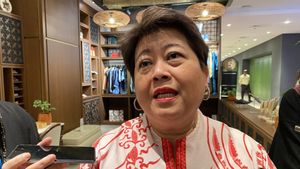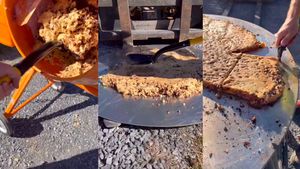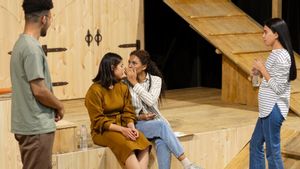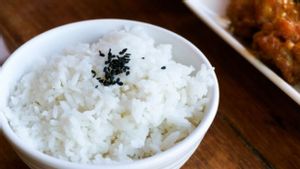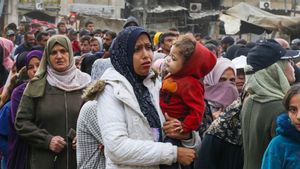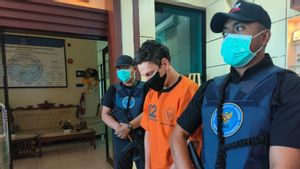JAKARTA - Celebrity Nikita Mirzani doubts that the leader of the Islamic Defenders Front (FPI) Rizieq Shihab is truly a descendant of the Prophet Muhammad. Nikita challenges Rizieq to a DNA test to prove that he is indeed the Prophet's grandson. Nikita's right to Rizieq is spectacular. However, he should also know that the recording of the genealogy of the Prophet was not an arbitrary matter. The Rabithah Alawiyah Institute is behind it. If you trace its history, this organization has recorded the lineage or lineage of the Prophet since Indonesia was not independent.
Quoted from Detik, Tuesday, November 17, Nikita said she was skeptical of Rizieq Shihab's nickname "Habib". He claimed to have read the genealogy of the Prophet's grandchildren. And there he did not find Rizieq's name.
"You say you are the Prophet's grandson. I am also the Prophet's grandson. Nothing is debated. Prophet Adam. Try so that there is no slander, DNA tests, let us see if he is truly a descendant of the Prophet? Try not to dare to do the human being who you are great to test DNA! " Nikita wrote on Instagram Stories a few days ago.
In a document from the lineage registration agency or lineage of the Prophet Muhammad, Rabithah Alawiyah, it is noted that Rizieq Shihab is a descendant of the Prophet. This was revealed directly by the Chairperson of the Daimi Maktab Maktab Nasab Registration, Rabithah Alawiyah, Ustaz Ahmad Alatas. He said Rizieq was the 39th generation of the Prophet Muhammad.
"If he comes to Siti Fatimah, he is 38. When he comes to the Prophet Muhammad he is 39," said Ahmad as quoted by Suara. He proved this through documents taken from Syajarah Assabah Al Asyraf Alalawiyyin, Juz 2, page 236. The document validating that Rizieq was actually the Prophet's grandson was first published on September 8, 2003 with the ID number 19176.

Sayyid or Habib is the name for the grandchildren of the Prophet Muhammad's descendants from his son, Fatimah Az-Zahra and her husband, Ali bin Abi Tholib. The designation, as explained by Alisha Fakhira in her writing, Organizational Dynamics of Rabithah Alawiyah 1928-1958 (2019) refers to Fatimah and Ali's children, Husein. Meanwhile, there is also the term "Syarif" to refer to the descendants of Hasan, Husein's sibling.
The descendants of Bani Hasan and Banu Husein were called Bani Alawiy. In Indonesia, the Alawiyin originated from a person named Ahmad bin Isa who was nicknamed Al-Muhajir or a person who moved from Basrah to Hadramaut, Yemen.
In the book Trajectory of Islamic History in Indonesia, it is mentioned that Bani Alawiyin entered the archipelago via the Sila Islands in the Philippines. They spread Islam and formed colonies there.
Some shipping records say that pre-Islamic and later Arabs had sailed and settled in the Archipelago for trading purposes. In Java Island, Islamic broadcasting cannot be separated from the role of Wali Songo. It was then that the Arabs began to merge with the bumiputera and assimilate.
To record the descendants of Bani Alawiyin, as explained on the website of Rabithah Alawiyah, the system of recording was started in the 15th century by Sheikh Ali bin Abubakar As-Sakran. The recording of the Alawiyin text was also carried out by Habib Abdullah bin Alwi Alhaddad with financial assistance from the kings of India. Habib Abdullah ordered the recording of Alawiyin in Hadramaut, Yemen, in the 17th century.
The most recent major record was carried out by Hadramaut's mufti, Habib Abdurrahman bin Muhammad Al-Masyhur at the end of the 19th century which was then continued by his son, Sayid Ali bin Abdurrahman Al-Masyhur. The results of their recording were collected in seven textbooks from Hadramaut.
When Habib Alwi bin Thahir Alhaddad founded the Rabithah Alawiyah organization, he took the initiative to record Alawiyin in Indonesia. From there, Rabithah Alawiyah formed Maktab Daimi on March 10, 1932.
Record methodRabithah Alawiyah is an autonomous institution that has the task of preserving the history and lineage of the Prophet's grandchildren in Indonesia. In carrying out its duties, Maktab Daimi has a special method to find out a person's lineage by looking at the lineage of the Prophet Muhammad or not.
According to the Chairman of the Daimi Maktab Rabithah Alawiyah, Ustadz Ahmad bin Muhammad Alatas said, everyone who wants to know the lineage of his lineage must submit a request to the Daimi Maktab. The applicant then fills in a special form that is already available. One of the forms must include his lineage of the lineage to his fifth grandfather.
"After correctly recording (the name of his grandfather), we will check the major books (lineage books) that we have," said Ustadz Ahmad to Republika quoted on the Rabithah Alawiyah page.

After the names of his grandparents are in the textbook, the Daimi Maktab will ask the applicant to present a witness stating that the applicant really comes from the Alawiyin tribe or clan. On the other hand, if the name of the grandfather that is written down is not in the silsiah book that the Daimi School is referring to, then they use another method.
The method in question is that the Daimi Maktab will ask for consecutive and valid genealogical data of the applicant's grandfather until the applicant's grandfather is in the lineage book. For example, the applicant writes the lineage of his grandfather to his fifth grandfather. However, there are four names of his grandfather who are not listed in the Daimi Maktab lineage book.
So, the four names of his grandfather must be proven with data, such as family cards, marriage certificates, passports, and buying and selling documents. "All of which will mention the name of his father, so that it will continue to the lineage in this book," he said. This method, according to Ustadz Ahmad, was designed to avoid people who want to falsify their lineage.
Source matchingAccording to Ustaz Ahmad, the references used by the Daimi Maktab originally came from two books. First, a book from direct Hadramaut written by Habib Abdurrahman bin Muhammad Almasyhur in the late 19th century.
The two books that have been developed by the head of the first Daimi Maktab, Alhabib Ali bin Ja'far Assegaf. So in 1930-1940, data collection on sayyids throughout Indonesia began. As a result, seven volumes of books were collected by Alhabib Ali bin Ja'far Assegaf.
Then, the book of scripture from Alhabib Ali bin Ja'far Assegaf's data was combined with the text book from Hadramaut. The result is 15 volumes of textbooks. That book is now a reference for the Daimi Maktab to trace someone's lineage.
According to Ustadz Ahmad, in this world there are only 15 volumes of books containing the Prophet Muhammad's lineage from the lineage of Husein bin Ali bin Abi Talib. The 15-volume lineage book was then distributed to Surayaba, Pekalongan, and Palembang because there were many alawiyin there.
The neatness of the writing of the scriptures was even recognized by four Sufi figures from the Middle East who had visited Indonesia last year. The four figures are Shaykh Dr. Muhammad Asy Syuhumi, Shaykh Dr. Adnan Al-Afyouni, Dr. Abdul Aziz Al-Cubaithi, and Shaykh Dr. Riyadh Hasan Bazou, as quoted by Okezone, considered Rabithah Alawiyah to be the tidest in recording the Prophet Muhammad's scriptures.
They say in Indonesia the registration system is institutionalized and the process goes through a fairly strict path to be recognized as a descendant of the Prophet Muhammad. "I can say that at best, the rabithah of all the rabitha who recorded the best lineage of the Prophet Muhammad's children and grandchildren is the rabithah in Indonesia," said the Chairman of the Advisory Board and Scientific Authority of the Libyan International Sufism Federation, Shaykh Dr. Muhammad Asy-Syuhumi Al-Idrisi.
The English, Chinese, Japanese, Arabic, and French versions are automatically generated by the AI. So there may still be inaccuracies in translating, please always see Indonesian as our main language. (system supported by DigitalSiber.id)
